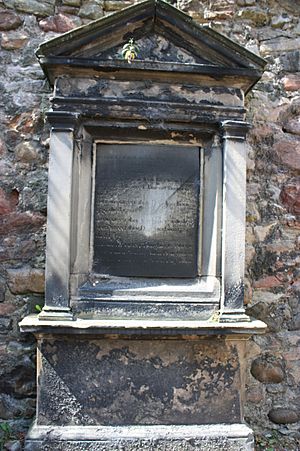Patrick Grant, Lord Elchies facts for kids
Patrick Grant, Lord Elchies (1691–1754) was an important Scottish judge. He rose to become a very high-ranking judge, known as a Lord of Session and a Senator of the College of Justice. This meant he was one of the most important legal figures in Scotland during his time.
Contents
Patrick Grant's Life Story
Patrick Grant was born in 1691. He was the son of Captain Grant, who lived in a place called Easter Elchies.
Becoming a Judge
Patrick went to the University of Edinburgh to study law. After he finished, he became a lawyer, or 'advocate,' on February 12, 1712. He was very good at his job and had many clients.
Later, on November 3, 1732, he became a judge. He was given the special title of Lord Elchies. He took over this role from another judge, Sir John Maxwell. A few years later, on March 3, 1737, he also became a 'lord of justiciary,' which meant he handled important criminal cases.
Where He Died and Was Buried
Patrick Grant passed away at his home, Inch House, on the southern edge of Edinburgh. This was on July 27, 1754.
He was buried in a special, sealed part of Greyfriars Kirkyard in Edinburgh. This area is known as the Covenanter's Prison. His family members are also buried with him there.
His Family Life
Patrick Grant married Margaret Dickson (1697–1746). She was the daughter of Sir Robert Dickson.
Sadly, their children did not live very long. Their daughter Barbara (1729–1759) and sons David (1731–1747) and Mary (1735–1747) all passed away when they were young.
His Legal Writings
Lord Elchies was not just a judge; he also wrote important legal books.
Court Decisions Collection
He collected all the important decisions made by the court of session from 1733 to 1757. These were like records of how different cases were decided. His collection was later printed in 1813 by William Maxwell Morison.
Notes on Law Books
He also wrote notes for a very important law book called the Institutes, which was written by James Dalrymple, 1st Viscount of Stair. These notes helped explain the laws even better. His notes were published in 1824.


